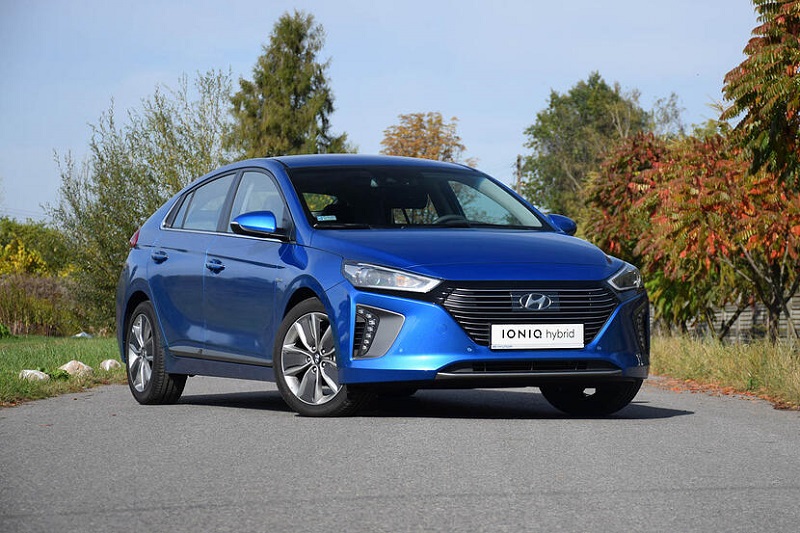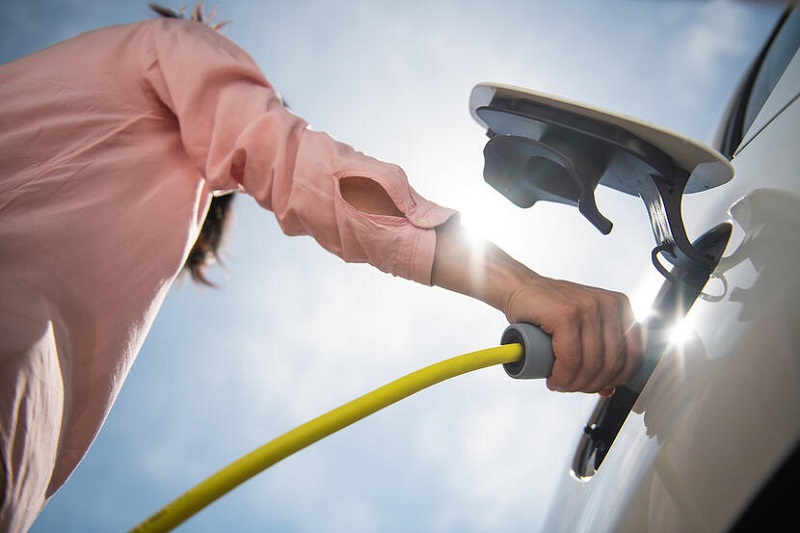Understanding Key Challenges and Opportunities of Fleet EV Adoption

There’s a lot of talk about electric vehicles today, and businesses with fleets can’t help but be brought into the conversation.
Learn more about electrifying your business fleet and EV fleet management.
While the EV adoption rate is only at around 2-3% in the United States, businesses should keep up-to-date with what’s happening in the EV industry. It may take several more years, but the transition to electric is coming.
In this article, you’ll get a good overview of the challenges and opportunities associated with electric vehicle adoption for fleets.
Choosing the Right Vehicle for the Job
Vehicle manufacturers are pushing EV adoption forward faster than ever before. GM is committed to building 30 new global electric vehicles by 2025, and Volvo plans to sell only electric vehicles by 2030.
However, even though EVs will be the way of the future, gas and diesel-powered vehicles will still be around for a long time. So businesses should, first and foremost, continue to choose the right vehicle for the job. That being said, let’s look at some lower-carbon options you may want to start considering.
If your business has a sustainability mandate, hybrid-electric vehicles can lower your carbon footprint, while providing longer range and a wider selection of options than full battery electric vehicles.

Hybrids can even save you money. One of our clients exclusively runs hybrid electric vehicles because for their purposes, hybrids are more cost-effective than gas-powered vehicles. For example, the Hyundai Ioniq hybrid electric runs on 58 miles per gallon, whereas a Toyota gas-powered vehicle runs on 38 miles per gallon, and the initial cost of the vehicles is similar.
Since many businesses require work vehicles like vans and pickups, the lack of electric alternatives on the market has been one barrier for EV adoption. While the selection is currently low, there are some exciting developments happening in the industry. Manufacturers such as Rivian, General Motors, and Ford are now designing electric pickups, vans, and light trucks, which will expand the buying options for businesses looking for environmentally friendly work vehicles.
Important Cost considerations
We can’t have a conversation about EVs without addressing the cost. It’s no secret that upfront costs are higher, but what many people don’t realize is that because of the lower fuel and maintenance expenses, an electric vehicle can have a much lower overall total cost of ownership than a gas-powered one.
Additionally, there are a number of rebates available that reduce the purchase price. Most of the rebates are on the federal level, but some states also have their own credits. Vehicle manufacturers like Nissan and Hyundai also provide their own rebates.
Charging an Electric Vehicle Fleet

EV charging is an important consideration because you need a vehicle with enough charge to do its job.
If an employee takes their vehicle home with them at night, they have the option to charge the vehicle using their home’s standard 120V outdoor outlet. This outlet is a Level 1 charger and will trickle-charge a battery electric vehicle over 12 to 20 hours. While trickle charging takes a long time, it’s better for the battery and won’t degrade it as much as fast charging will.
For those who prefer the practicality of fast charging, installing workplace Level 2 or Level 3 chargers is an option—provided the employee returns the vehicle to the office every night. Level 2 chargers are 240V, and typically charge an EV in six to 14 hours. Level 3 chargers use a direct current connection to an electrical system and will charge an EV in one to four hours.
A third alternative would be to install a Level 2 charger at the employee’s home, but there is more complexity around that, in terms of who pays for it, what happens if the employee leaves the company, and whether the neighborhood’s electrical grid can handle the increased load.
Finally, if the federal government’s proposed EV charging infrastructure bill of spending $15 billion to install 500,000 chargers by 2030 is passed, drivers will have increased access to public Level 3 chargers while out on their routes.
Considerations on EV Driving Range

While many people still have ‘range anxiety’ when considering electric vehicles, the good news is that EV range has increased substantially in recent years. Today, the average range is 217 miles per charge, whereas five years ago, it was only 125 miles per charge. This means for most businesses, the current range is enough to keep your driver on the road all day.
One thing to note is that battery performance worsens when driving in temperatures below 20 degrees, and using the heater will reduce the range by 50%. So if your fleet operates in colder states, this is important to keep in mind.
What to Know About EV Battery Lifetime
While EVs can have an overall lower total cost of ownership (TCO) than gas or diesel-powered cars, your TCO will increase substantially if something goes wrong with the battery. The good news is, electric vehicle batteries come with an eight-year warranty. The bad news is, should you need to replace a battery after that, it’s quite expensive to do so. Leasing an electric vehicle can, therefore, make a lot of sense.
Like any other, an electric vehicle’s battery will degrade a bit every year. But there are some things you can do to prolong its life. Charging best practices, such as not overcharging the battery and not relying on fast chargers too much, will help.
Final Thoughts
While there’s certainly no rush to adopt electric vehicles, it’s important to keep updated with what’s happening in the industry. Sooner or later, every business will have electric vehicles in their fleets, so knowing the opportunities and challenges that go along with them will help you be better prepared for when you do decide to adopt.
The team at Ewald is here to provide the information you need to make an educated decision about what’s best for your fleet. Don’t hesitate to reach out to us to talk about electric vehicles or any other fleet-related questions you may have.

